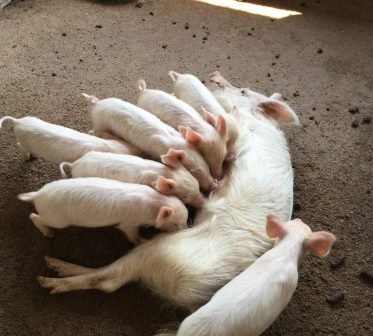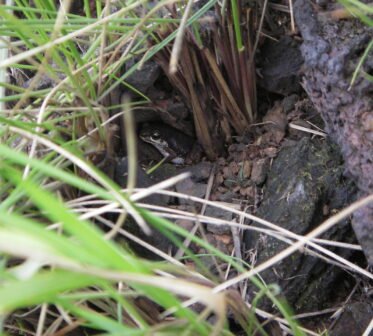In the 1970s and 1980s, 14 tunnels were dug at high-elevations site in the present-day ‘Mining Enclave’ of the Nimba Mountains. These tunnels, known as ‘adits’, were about 2m tall and 1.5m wide, and ranged between 15 and 240m deep. They were mainly for mapping of the geological structure of the mountains where drilling was difficult.
According to staff working at the time, within 6-9 months, bats began colonising the adits. Today they are home to thousands of bats. These adits were never intended to be permanent, however, and many have collapsed naturally, either internally, closing off part of the tunnel, or at the entrance, closing it entirely.
SMFG has commissioned various bat specialists to study the bats, and most of all the NGO ‘Bat Conservation International’ (BCI). BCI has undertaken multiple field surveys of adits and natural caves in the Nimba Mountains. It developed a library of bat calls for Nimba’s high-elevation bats, having recorded calls at adits’ entrances since 2017. With these tools, BCI and SMFG are developing an understanding of which species use which adits, and at what time(s) of the year.
Of particular interest to conservation is the Lamotte’s roundleaf bat, Hipposideros lamottei, listed by IUCN as critically endangered. Known only from the Guinean Nimba Mountains, while small populations have been found in natural caves in the World Heritage Site, much of its known population lives in the adits. All the adits where it lives are in different states of collapse, and will all disappear in time.
BCI and SMFG therefore undertook detailed surveys of the interior of the adits, measuring temperature, humidity, adit structure, distance-to-the-entrance and other parameters. BCI identified adits’ characteristics that appear important for bats, particularly for H. lamottei. Using BCI’s recommendations, SMFG is engaging a specialised engineering firm to study where and how to drill new tunnels for bats, reinforced to endure for centuries, in suitable habitat away from where bats could be disturbed by a mining project.
SMFG has become the steward of these bats, but with or without mining, the adits are doomed. In partnership with BCI, SMFG seeks to ensure the long-term survival and hopefully increase of Lamotte’s roundleaf bat.



